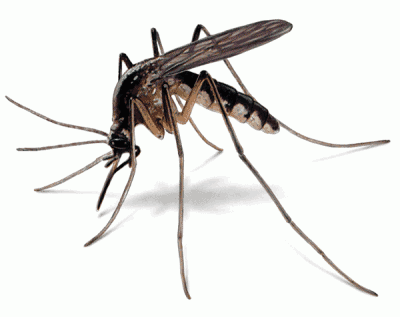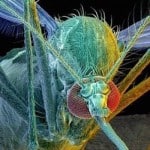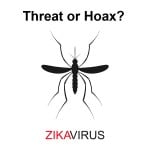By Dr. Mercola
As you may recall, the Zika virus made big headlines back in January and February when the Brazilian government blamed Zika-carrying mosquitoes for an uptick in reports of microcephaly,1,2 a condition in which babies are born with unusually small heads.
Like many other nations, the U.S. overreacted to the news by increasing states’ mosquito eradication efforts. 3 Some early models estimated that 200 million Americans, about 60 percent of the U.S. population, would become infected with Zika this summer4 — estimates that were clearly vastly overblown.
Sounds just like President Bush who 11 years ago claimed that over 200 million would not only get infected with Bird Flu but would actually die from it. They must have figured most people forgot about this and it was time for another scare to sell more chemicals and vaccines.
Centers for Disease Control and Prevention (CDC) statistics5 reveal we’ve come nowhere near such numbers.
The two states with the highest rates of laboratory-confirmed Zika infections, New York and Florida, have had 625 and 507 cases respectively so far. New York accounts for 23 percent of all U.S. cases; Florida accounts for 19 percent of the total.
It’s worth noting though that the vast majority of all Zika cases in the U.S. occurred during travel elsewhere. Florida alone had 35 cases of locally acquired infections. All other states report zero locally-acquired cases.
Among the U.S. territories, Puerto Rico was worst beset, with 13,791 locally-acquired cases as of August 31, 2016. The U.S. Virgin Islands and American Samoa report 221 and 47 locally-acquired cases respectively.
Call for DDT Has (Fortunately) Been Left Unanswered
As the Zika scare grew to a fever pitch, groups like the Manhattan Institute and various journalists for prominent media outlets started calling for the return of DDT6to address the mosquito problem. For example, in a June 6 article, The New York Post wrote:7
“The Zika virus outbreak makes it clearer than ever: It’s time to end the ban on DDT — a ban that was never sensible in the first place, but now is downright unjustifiable.”
Never mind the fact that DDT passes freely through the placenta during pregnancy,8where it gains direct access to the developing fetus and its brain.9 DDT has also been linked to decreased fertility, premature delivery, Alzheimer’s10 and even microcephaly,11 making this recommendation about as ignorant as it gets.12
Fortunately, the ban on DDT has not been lifted. However, there’s no shortage of other dangerous insecticides on the market, and they’ve been heavily employed in many states.
Florida and New York Being Heavily Sprayed

In Miami-Dade County, Florida, the aerial spraying campaign against Zika-carrying mosquitoes has been referred to as a “blitz” that “could be one for the record books if the [CDC] records it as a success.”13 The area began spraying the insecticide Naled from low-flying planes on August 4.
Naled is banned in the European Union (EU), and when residents in Puerto Rico found out the CDC was going to use the chemical against Zika-carrying mosquitoes there, the streets filled with protesters. Governor Alejandro Garcia Padilla finally forced the CDC to take the shipments back.14
Concerned residents took to the streets in Wynwood, Miami, as well, but it didn’t have much of an impact.
Neighborhoods in Queens and Brooklyn, New York, were doused with Duet15 and Anvil insecticides from trucks on the nights of August 31 and September 1, 2016, to combat mosquitoes known to carry either the Zika or West Nile virus (Asian Tiger, Aedes Aegypti and Culex mosquitoes).16,17 Duet has also been used in Orange County, California.18
Duet19 contains two pyrethroid pesticides, Sumithrin and Prallethrin, plus a synergistic compound called piperonyl butoxide (PBO), which boosts the effectiveness of the former two.
Sumethrin is an endocrine disruptor, neurotoxin and likely carcinogen, and PBO has been shown to be harmful to the fetal brain, causing “profound developmental defects in children exposed in utero.”
According to recent research, children living in areas exposed to annual aerial spraying of pyrethroids (such as Duet and Anvil) have a 25 percent higher risk of autism compared to areas where mosquito control is done primarily through pellets distributed on the ground.
This suggests the method of application can make a big difference when it comes to human health.20,21 In another study, exposure to pyrethroids during the third trimester increased the chances of the child having autism by 87 percent.22
Low-flying helicopters also released pellets of Altosid and VectoBac over four New York City boroughs earlier this summer, including Brooklyn, Queens, Staten Island and The Bronx. As noted by The Vaccine Reaction:23
“What might be of particular concern to the New York City’s residents is the ironic possibility that using these chemicals against mosquitoes to control the perceived threat of the Zika virus could actually have the effect of creating a serious local health crisis where there was previously none.
While the CDC seems convinced that Zika is behind the microcephaly cases in Brazil … other organizations such as Médicos de Pueblos Fumigados (Physicians in the Crop-Sprayed Villages) of Argentina … has argued that an insect growth regulator similar to Altosid may be responsible for the microcephaly cases.”
Aerial Spraying Is Not an Effective Strategy for Controlling Zika
Many have also argued that aerial sprayings against the Zika-carrying mosquito Aedes aegypti is futile, exposing the population to toxic chemicals for no good reason.24
These tiny black and white striped mosquitoes have a very limited range of flight, and since it’s so difficult to catch them airborne, insecticidal sprays and foggers are mostly useless for controlling them.25 Reporting on recent research, WebMD writes:26
“Female mosquitoes can transmit the Zika virus to their eggs and offspring, and this may make it harder to contain outbreaks, a new lab study suggests. Control programs that focus only on adult mosquitoes may not halt Zika’s spread, the researchers warned …
‘Spraying affects adults, but it does not usually kill the immature forms — the eggs and larvae,’ said [study co-author Dr. Robert] Tesh. As a result, ‘spraying will reduce transmission, but it may not eliminate the virus’ …”
CDC Relies on Unpublished Data to Support Aerial Spraying
Curiously, CDC Director Dr. Tom Frieden defended the use of aerial insecticide sprayings in a recent article in the Journal of the American Medical Association (JAMA) citing a non-peer-reviewed presentation by a New Orleans mosquito control board employee named Brendan Carter.
According to Carter, aerial disbursement of “ultra-low volumes of insecticide” reduced caged Aedes aegypti by more than 90 percent in a New Orleans field trial. However, as reported by Kaiser Health News:27
“Carter earned his master’s degree in 2014 from the Tulane University School of Public Health and Tropical Medicine … Even so, other experts in mosquito-borne diseases were unconvinced when asked about Carter’s finding as described in Frieden’s commentary for JAMA.
‘I know of no published reports that support this figure,’ said Durland Fish, [Ph.D.] a Yale University professor emeritus of microbial diseases as well as a professor of forestry and environmental studies there.
Fish worked with public officials in Dominica in 2014 to counter chikungunya virus, another disease spread by the Aedes aegypti mosquito. ‘This is a domestic mosquito, meaning they live inside the house — in closets, under the bed, in the sink. Spraying outside won’t be very effective,’ he said.”
Micro-Mist May Work by Entering Your Home, but Is That Wise?
Many others agree with Fish’s conclusion, noting there’s virtually no scientific evidence to support the use of aerial spraying to control Aedes mosquitoes. However, Joseph Conlon, spokesman for the American Mosquito Control Association, is not on that list.
According to Conlon, the idea that aerial spraying against Aedes mosquitoes doesn’t work is an outdated notion, since Naled can now be sprayed in a micro-fine mist, “capable of wafting into homes through screen doors and bathroom vents.”28 But what about the residents, including infants and pregnant women, inside those homes who then breathe in this super-fine mist?
Naled, an organophospate insecticide is known to interfere with cholinesterase activity, an enzyme essential for the proper working of your nervous system. Organophosphates as a group are also linked with shortened pregnancies, lowered IQ and increased risk of attention deficit disorder (ADD).29
According to the Extension Toxicology Network, “Naled is moderately to highly toxic by ingestion, inhalation and dermal adsorption. Vapors or fumes of Naled are corrosive to the mucous membranes lining the mouth, throat and lungs, and inhalation may cause severe irritation.”30
It is also readily absorbed through your skin and should be immediately washed off if contact occurs. High temperatures and/or UV light enhances its toxicity — an added concern when sprayed in hot and sunny areas like Florida.
I live in Florida full-time now and this is a significant issue for me personally. This is one of the reasons why I use my infrared sauna three times a week to help me detox not only from these admitted exposures but also from all the other ones that we have no idea of but nevertheless have exposure to.
Naled Decimates Bee Populations in South Carolina
Naled was also sprayed in Dorchester County, South Carolina, in the morning hours between 6:30 a.m. and 8:30 a.m. on August 28, 2016 — with devastating consequences. In one Summerville apiary, 46 hives totaling 2.5 million bees died that same morning. Many other beekeepers also claim massive losses. As reported by The Washington Post:31
“[T]o the bee farmers, the reason is already clear. Their bees had been poisoned by Dorchester’s own insecticide efforts, casualties in the war on disease-carrying mosquitoes … Given the current concerns of West Nile virus and Zika … Dorchester decided to try something different … It marked a departure from Dorchester County’s usual ground-based efforts. For the first time, an airplane dispensed Naled in a fine mist, raining insect death from above …”
Naled is known to be highly toxic to bees, which is why counties that use it will typically spray it at night, when honey bees are not out foraging. Provided they have sufficient warning, beekeepers can also shield their hives to prevent exposure. According to Dorchester County administrator Jason Ward, all but one beekeeper on the county’s contact list was notified of the spraying.
However, many local beekeepers were not on the county’s list to begin with, and the county only requested a more complete list from the Lowcountry Beekeepers Association after the fact. In a WCSC-TV interview, local beekeeper Juanita Stanley said: “Had I known, I would have been camping on the steps doing whatever I had to do, screaming, ‘No you can’t do this.'”
Florida Governor Has Financial Stake in Zika Mosquito Control
Considering the limited risks of Zika and the significant risks of aerial insecticides on critical pollinators like bees and human health, one wonders what’s really driving the decision process. When you start to dig, you’ll often find financial incentives. In Florida, people are now wondering whether Governor Rick Scott may have a personal stake in unleashing chemical warfare.
On June 23, 2016, Scott allocated $26.2 million in state emergency funds to combat Zika. As it turns out, an undisclosed conflict of interest could potentially have influenced this generous release of funds. According to Florida Bulldog:32
“… Rick Scott has an undisclosed financial interest in a Zika mosquito control company in which his wife, Florida First Lady Ann Scott, owns a multi-million dollar stake through a private investment firm she co-owns. The company is Mosquito Control Services LLC of Metairie, LA. According to its website,
MCS ‘is a fully-certified team of mosquito control experts — licensed throughout the Gulf Coast, including Louisiana, Georgia, Mississippi, Alabama and Florida’ … It is not known whether MCS, whose services include monitoring and aerial spraying, stands to benefit from Florida government funds … MCS did not respond to two requests for comment.”
Is Zika Being Hyped to Save Toxic Insecticides From Being Banned?
In a recent Health Nut News article,33 Erin Elizabeth pieces together a long list of events and players suggesting the real reason for the Zika hype may be related to the fact that the primary chemical weapons against Zika — Naled and Malathion — are both up for re-evaluation at the EPA under a special provision of the Endangered Species Act. If found to harm endangered species, they will be banned — unless there’s sufficient political pressure to keep them on the market, that is.
Moreover, the Clean Water Act stipulates you must have a NPDES permit34 in order to be “allowed” to discharge pollutants into U.S. waters. Insecticides are a significant water pollutant, and mosquito control applications that result in water discharges must have an NPDES permit, which includes limits on the discharges and has certain monitoring and reporting requirements to ensure the chemical does not hurt water quality and human health.
Should Naled and/or Malathion be found harmful to endangered species, operators would not likely be able to get an NPDES permit for the chemicals even if they somehow were not outright banned under the Endangered Species Act.
Interestingly enough, the American Mosquito Control Association has lobbied Congress to pass HR 935, which would exempt mosquito control operations from the NPDES permit requirement altogether, allowing them to discharge whatever chemical without limits, monitoring or reporting requirements.
When Congress remained unreceptive to the idea, HR 935 was suddenly renamed the “Zika Control Act.” Once Congress comes back from recess, they could potentially be forced to vote yes on this disastrous bill if there’s sufficient panic about Zika.
The Senate is also scheduled to vote on whether to set aside another $1.1 BILLION in funding to fight Zika — a virus that so far has not seriously harmed a single person in the U.S., and has not conclusively been proven responsible for the microcephaly cases in Brazil either. In short, this whole thing appears to be little more than a gift to the chemical industry at the expense of public health. As noted by Erin:
“The American Mosquito Control Association and the chemical companies can only benefit from huge hype and fear surrounding Zika. They NEED the populace to fear Zika so that Congress is forced to approve a terrible bill that would pollute/erode the Clean Water Act and eventually allow for Malathion and Naled [to] continue to be used despite data showing their effect on endangered species.”
Some States Now Offer Free Mosquito Repellents
In related news, in addition to boosting mosquito sprayings across entire neighborhoods, some states have decided to hand out free mosquito repellents. Universal Studios, Walt Disney World and SeaWorld in Orlando, Florida, now offer free bug repellents to visitors35 and, in Texas, pregnant women on Medicaid are eligible to receive free DEET mosquito repellent at pharmacies without a prescription.36
However, DEET is by no means harmless. On the contrary, DEET has been shown to harm brain and nervous system function and is so poisonous that even the Environmental Protection Agency (EPA) says you should wash it off your skin when you return indoors, avoid breathing it in and not spray it directly on your face. Why focus on distributing a highly toxic chemical to pregnant women rather than giving them something that’s actually safe?
Neem-based products, for example, are a viable alternative that can keep mosquitos at bay without risking your and your baby’s health. Citronella oil and geraniol can also be used, and both are safe for the whole family, including infants. Products containing either 20 percent picaridin or 30 percent oil of lemon and eucalyptus have also been shown to outperform DEET in tests.
Picaridin resembles the natural compound piperine, an essential oil in black pepper. Lemon eucalyptus oil and picaridin are not actual repellents; they primarily work by masking the environmental cues that mosquitoes use to locate their target. Side effects of both picaridin and lemon eucalyptus include potential skin or eye irritation, and the U.S. Food and Drug Administration (FDA) states picaridin should not be used on children under age 3. Still, they’re both likely FAR safer than DEET!
Biological Warfare Is a Risky Game
Are we doing the right thing by waging war against pests with toxic chemicals? It needs to be understood that there’s a price to pay, both in human and environmental health. We’re poisoning our world, and ourselves, in the name of protecting public health. There’s something inherently wrong with that position. Some are quick to say we have no other options. But this isn’t necessarily true.
In the short term, there are safer options to guard against mosquitos than aerial insecticides and topical DEET. But we also need to take a much wider view. What’s needed is the political and societal will to make necessary changes, and this involves fully embracing ecologically sound, regenerative methods of agriculture. Why? Because when nature is in balance, pests fail to gain the upper hand. They still exist, but they’re kept in check naturally.
It may not be as effective as releasing a potent toxin, but if we keep going the way we’re headed, we’re just going to encounter more of the same problems. Is it really worth putting our children’s health and future at risk? Is it worth decimating pollinators, on which our food supply depends? I believe the answer is no, but at the very least, we need a more open discussion about what we’re doing and what the options are. We also need to implement more farsighted solutions.
Again, this is all based on the likely flawed assumption that what the media, CDC and public health authorities are saying about Zika is true. In my view, this is merely a repeat of the Bird Flu Hoax, which is a New York Times best-selling book I previously wrote. They just fast-forwarded the clock a decade and hoped they could use the fear-based tactics to push their pernicious agenda yet again










